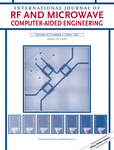Bandwidth adaptive behavioral model with dynamic structures for radio frequency power amplifiers
Funding information: China Postdoctoral Science Foundation, Grant/Award Number: 2019M663472; National Key Research and Development Program of China, Grant/Award Number: 2018YFB1802004; National Natural Science Foundation of China, Grant/Award Numbers: 61871075, 62001082
Abstract
To cope with the degradation of digital predistortion when bandwidth changes, a bandwidth adaptive behavioral model with dynamic structures for radio frequency (RF) power amplifiers (PAs) is proposed in this article. By applying the nonlinear post-compensation technology, PA's nonlinearity is decomposed and analyzed. Short-time Fourier transform and transfer functions are adopted to study the influence of bandwidth variation on the linear memory effect. Based on PA's memory effect analysis, a bandwidth adaptive model with dynamic structures and a coefficient update scheme with low complexity are proposed. Experiments carried on PAs show that the proposed model achieves similar linearization performance as other conventional models. Simultaneously, the proposed model has fewer coefficients and a reduction in the coefficient update of at least 50%.
Open Research
DATA AVAILABILITY STATEMENT
The data that support the findings of this study are available from the corresponding author upon reasonable request.




